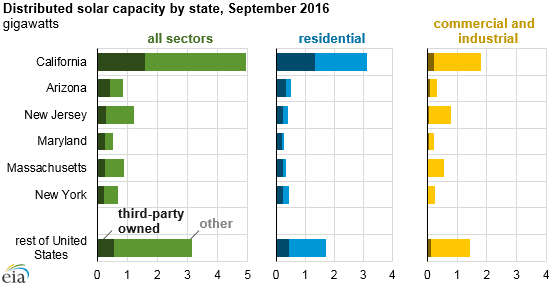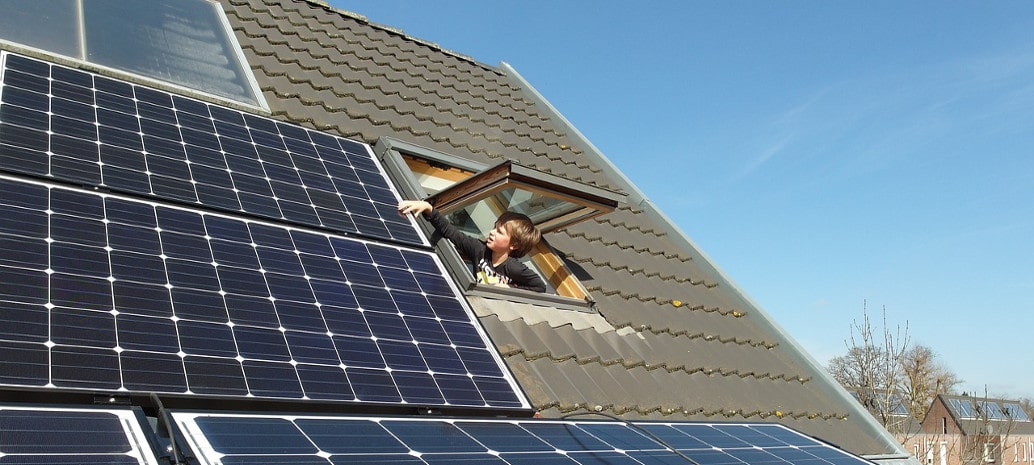The U.S. Department of Energy’s Energy Information Administration (EIA) has come a long way. Just more than one year ago the agency announced that it would begin reporting the output of distributed solar in its popular Electric Power Monthly publication, among its data of electricity output by source.
These days EIA is tackling such issues as third party ownership of distributed solar. Earlier this week the agency published a brief article which reported that roughly 30% of solar PV plants smaller than 1 MW are owned by third parties, meaning through leases and power purchase agreements wherein the provider or financier retains ownership of the system. The report also found that 44% of residential solar is contracted through this model.

This should not come as a surprise, given that third-party ownership has been the dominant business model in the residential segment for several years. EIA reports that this model is much less popular in the commercial and industrial (C&I) segment.
The article also charts the relative popularity of third-party ownership in different states, finding that while roughly 1/3 of California’s distributed solar – both residential and C&I – third-party solar represents more than half the distributed solar capacity deployed in both Maryland and Arizona. In New Jersey and Massachusetts the model is decidedly less popular, with home and business owners directly owning a higher portion of systems or taking out loans.
EIA’s data comes as the third party model is on the decline. GTM Research has predicted that direct purchases will overtake third party solar as the dominant business model in 2017, after two years of declining market share.
This content is protected by copyright and may not be reused. If you want to cooperate with us and would like to reuse some of our content, please contact: editors@pv-magazine.com.









By submitting this form you agree to pv magazine using your data for the purposes of publishing your comment.
Your personal data will only be disclosed or otherwise transmitted to third parties for the purposes of spam filtering or if this is necessary for technical maintenance of the website. Any other transfer to third parties will not take place unless this is justified on the basis of applicable data protection regulations or if pv magazine is legally obliged to do so.
You may revoke this consent at any time with effect for the future, in which case your personal data will be deleted immediately. Otherwise, your data will be deleted if pv magazine has processed your request or the purpose of data storage is fulfilled.
Further information on data privacy can be found in our Data Protection Policy.